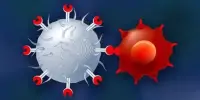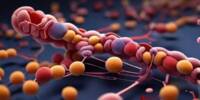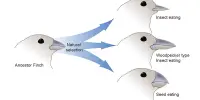The meltwater from glaciers carries thousands of tiny rock fragments into the sea. Using a special camera, researchers at the University of Oldenburg can make these mineral particles visible in all their diversity—and investigate their impact on ecosystems.
Dr. Jochen Wollschläger is studying a fascinating collage. Photos of more than a hundred tiny particles are gathered together in the image. Some look like shards of glass with jagged edges, delicate and translucent. Others are darker and rather clumpy in shape, but still translucent. A few are completely opaque.
“The picture shows photos of the particles we found in a water sample from the Garibaldi Fjord in southern Patagonia,” says the marine biologist, who researches the optical properties of seawater in the Marine Sensor Systems group at the University of Oldenburg’s Institute for Chemistry and Biology of the Marine Environment (ICBM).
These mineral particles are called ‘glacial flour’. They consist of tiny grains of rock that are scoured off the underlying rock when a glacier migrates. When glaciers melt due to global warming, particles that were previously trapped in the ice are released into the water.
Wollschläger
Wollschläger spent January and February of this year on board the research vessel Meteor, studying how the melting of glaciers is affecting the ecosystems in the fjords in the Beagle Channel of the Tierra del Fuego Archipelago together with other marine scientists from the ICBM, Bremerhaven, Chile, and Argentina.
The tiny particles play an important role in the water—in particular, the transparent splinters: “These mineral particles are called ‘glacial flour’. They consist of tiny grains of rock that are scoured off the underlying rock when a glacier migrates,” the researcher explains. When glaciers melt due to global warming, particles that were previously trapped in the ice are released into the water.

Less light in the depths
A layer of meltwater about one to one-and-a-half meters thick often forms on the surface of the water in fjords. This layer has a milky, clouded appearance due to the tiny mineral fragments it contains. “The particles limit the amount of light that penetrates to the depths,” reports Wollschläger, who is researching how this affects the underwater light conditions—and how free-swimming, tiny algae cope with the reduced amounts of light.
To measure the amount of glacial flour in the water, Wollschläger uses an instrument called a FlowCam which performs three tasks simultaneously: it provides a microscopic analysis of liquid samples, creates enlarged images of the particles suspended in the liquid, and characterizes the particles on the basis of various measurements.
“In principle, the FlowCam functions as a kind of automatic microscope with an integrated camera,” the biologist explains. It measures variables such as the particles’ diameter, color, transparency, and estimated volume. On the basis of this information, Wollschläger then sorts the particles into different categories.
In the collage, the particles from the Garibaldi Fjord have been sorted according to size. In addition to dead organic material the odd living cell—mainly tiny algae—can be observed. However, in some samples more than 90 percent of the particles are glacial flour—an indication that the water of the fjord contains enormous amounts of meltwater in some places.
Wollschläger is currently analyzing the data in greater detail, but one thing is already clear: the glacial flour has a major impact on the growth of plant plankton—which in turn forms the basis of the food chain in the marine environment. “In many places it is already so dark 20 meters below the surface that hardly any photosynthesis can take place,” says Wollschläger. The big question now is how much glacial flour will end up in the fjords in the future, as the glaciers continue to melt.
















